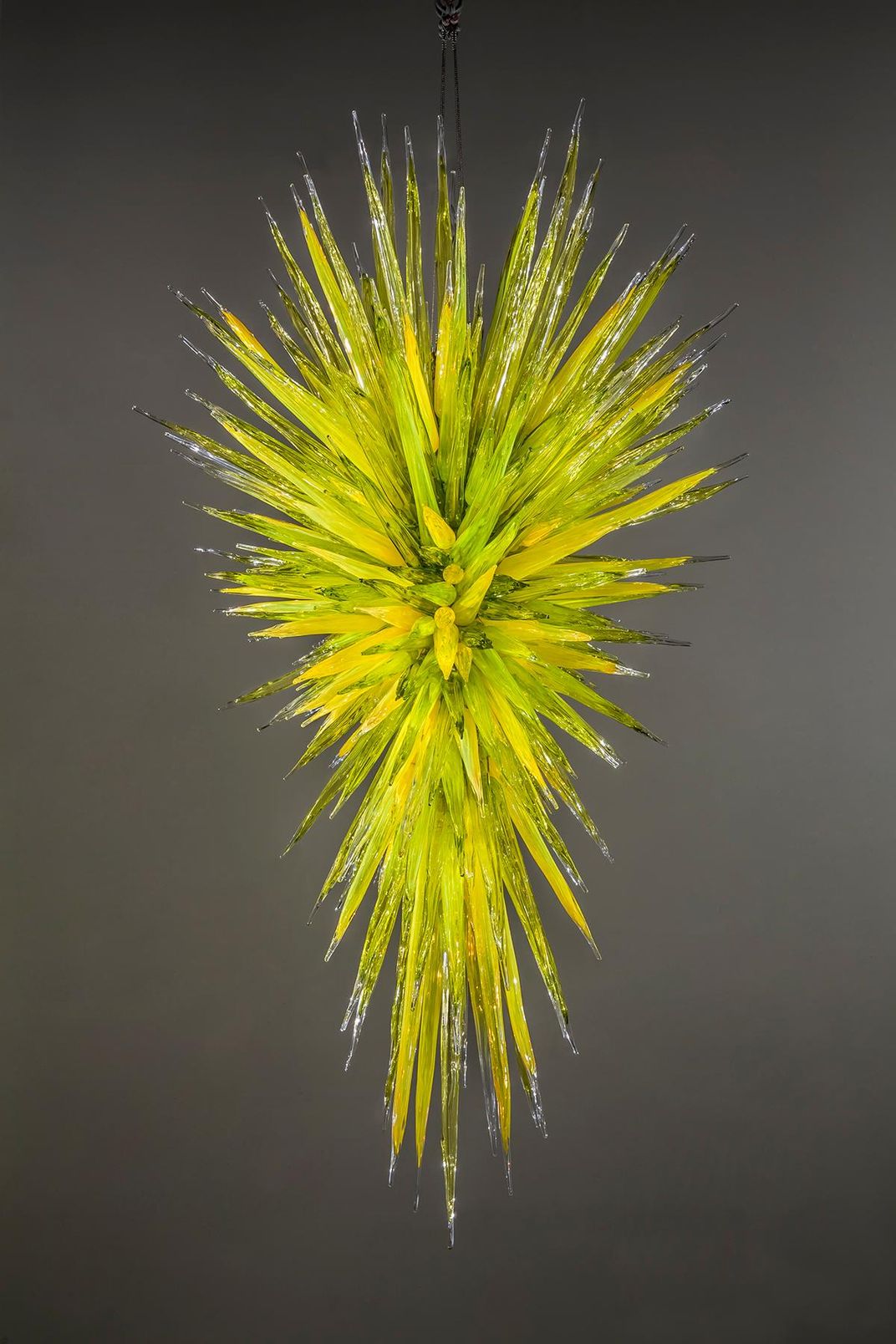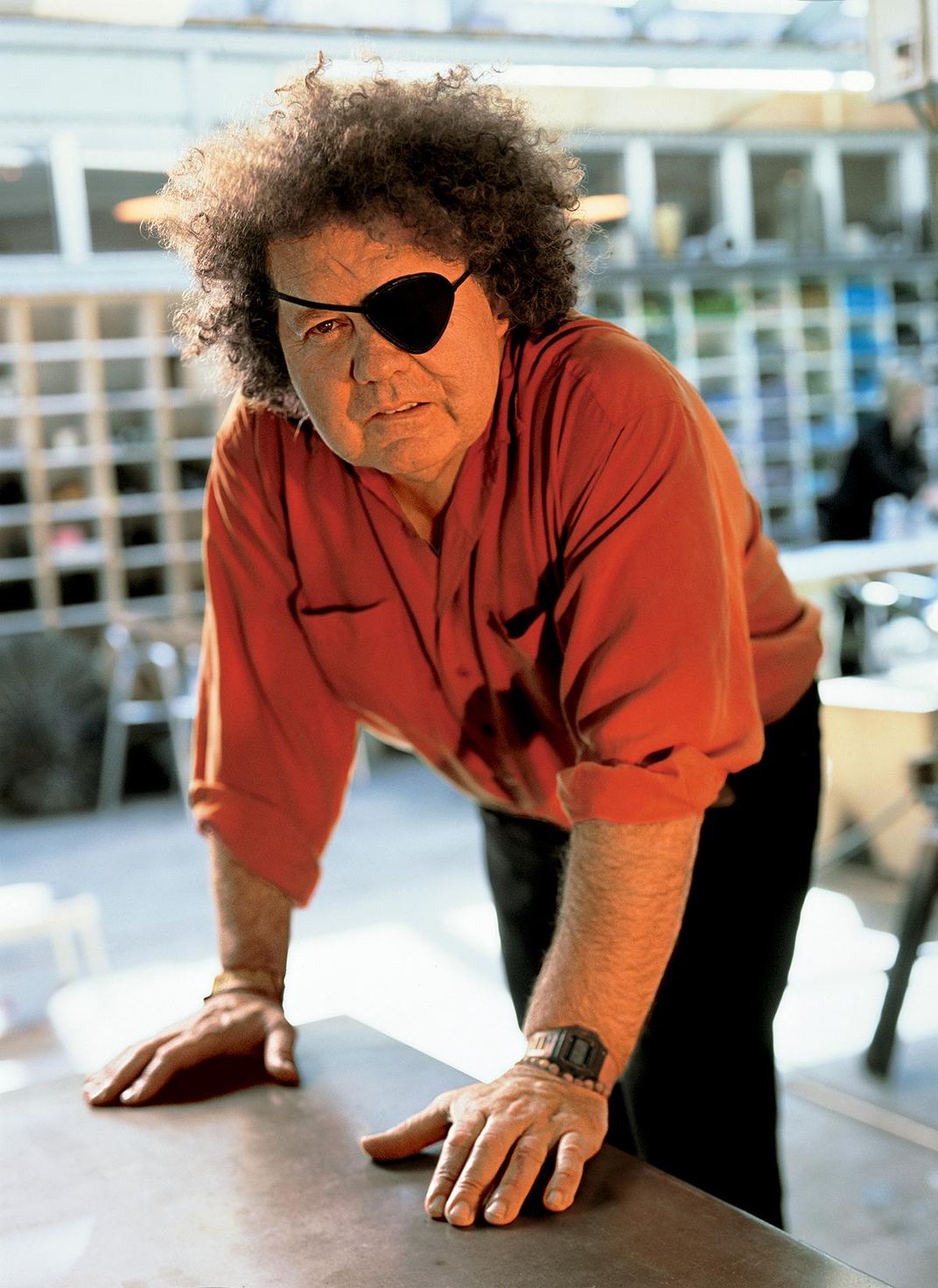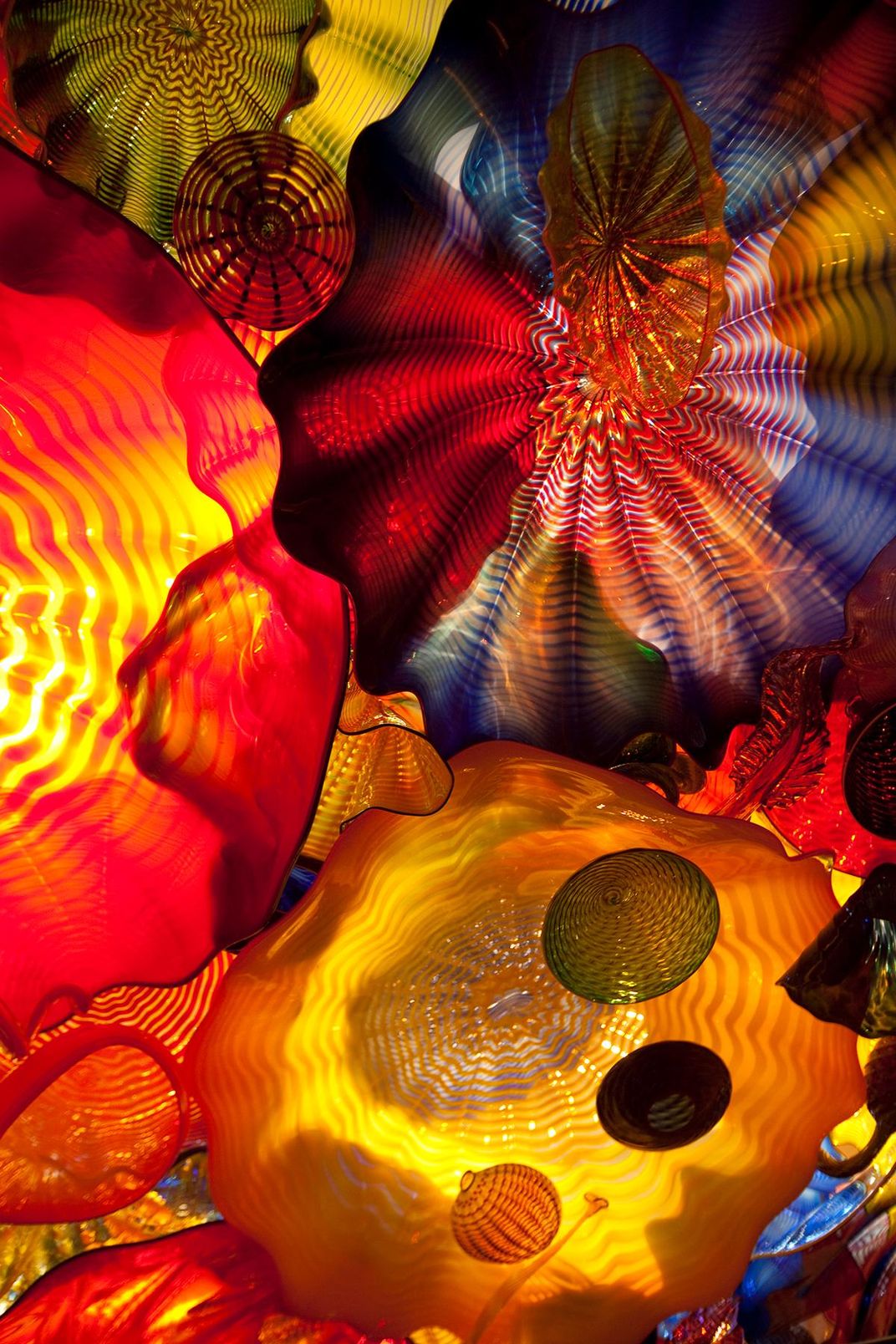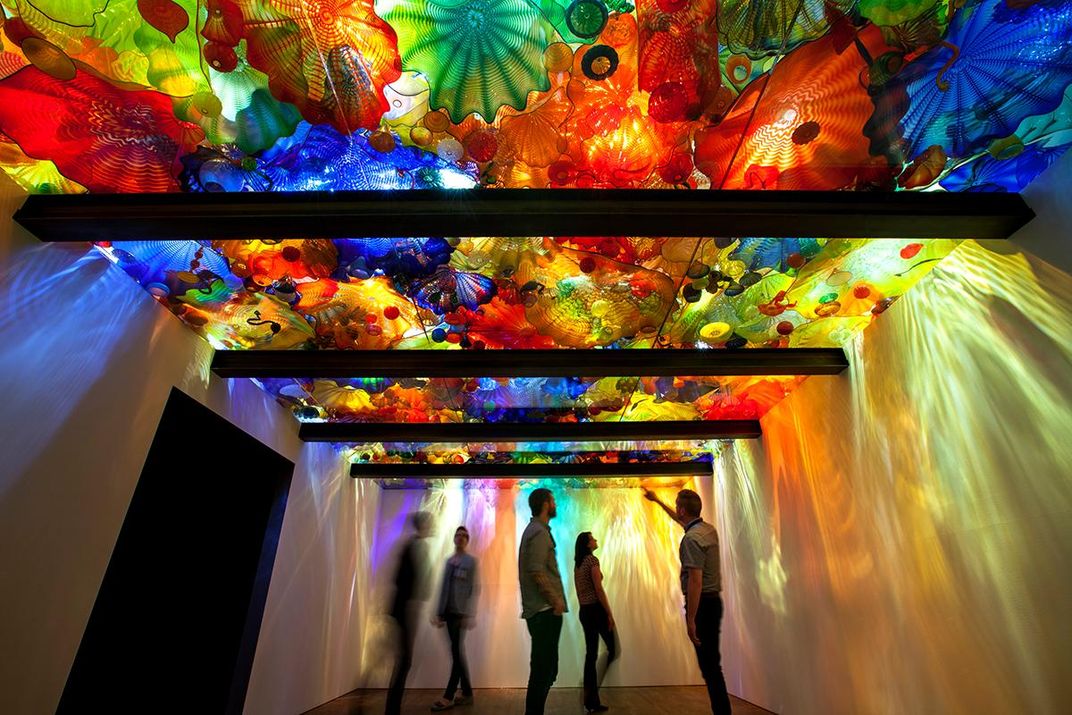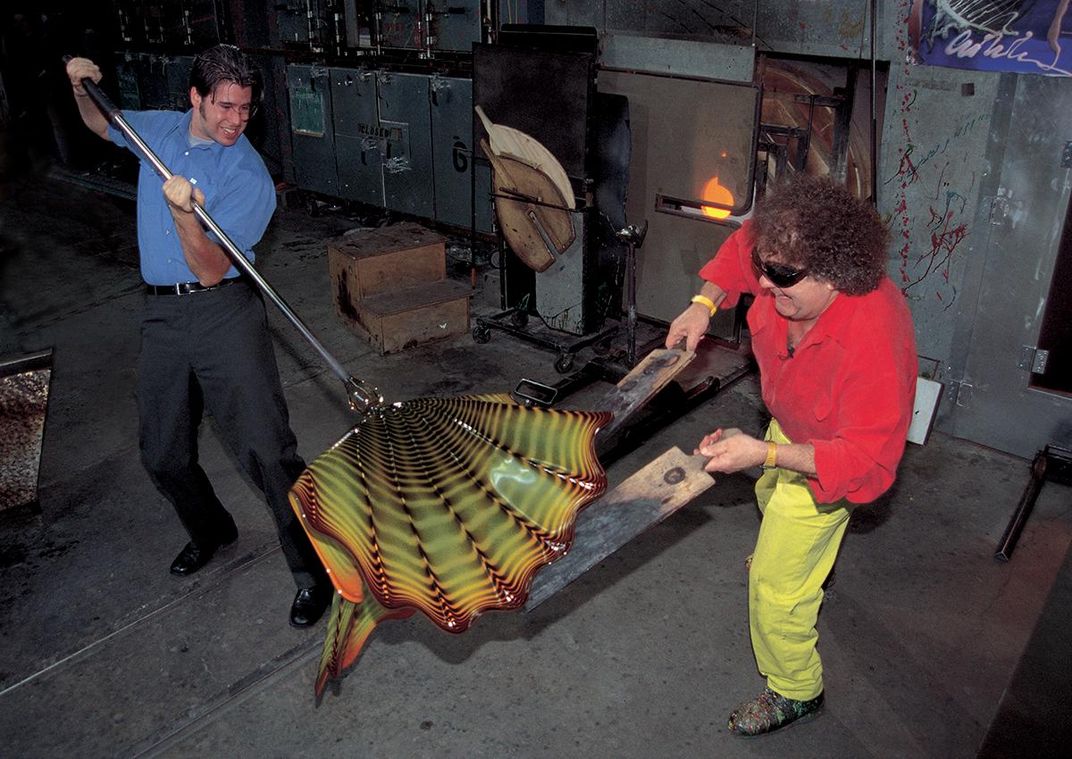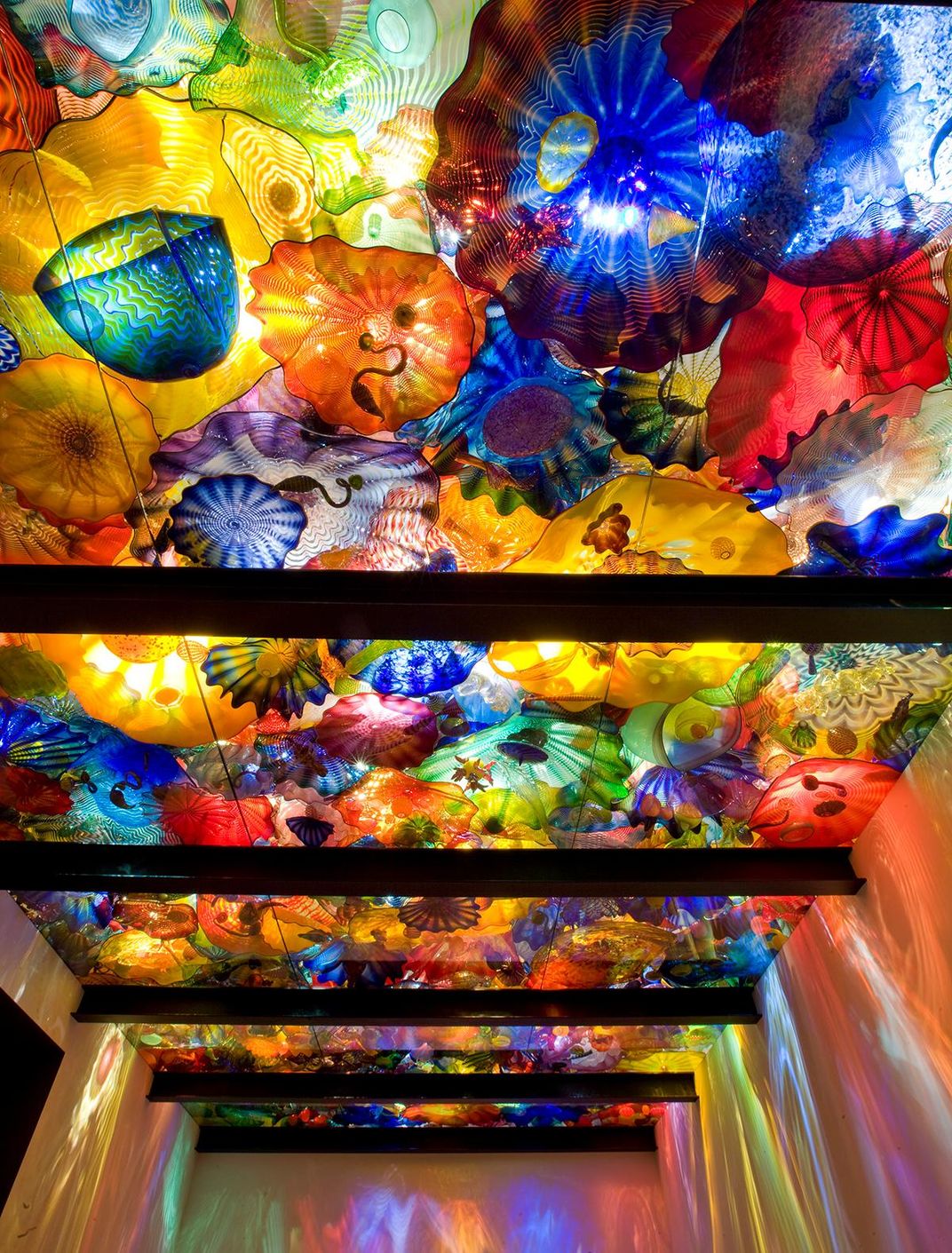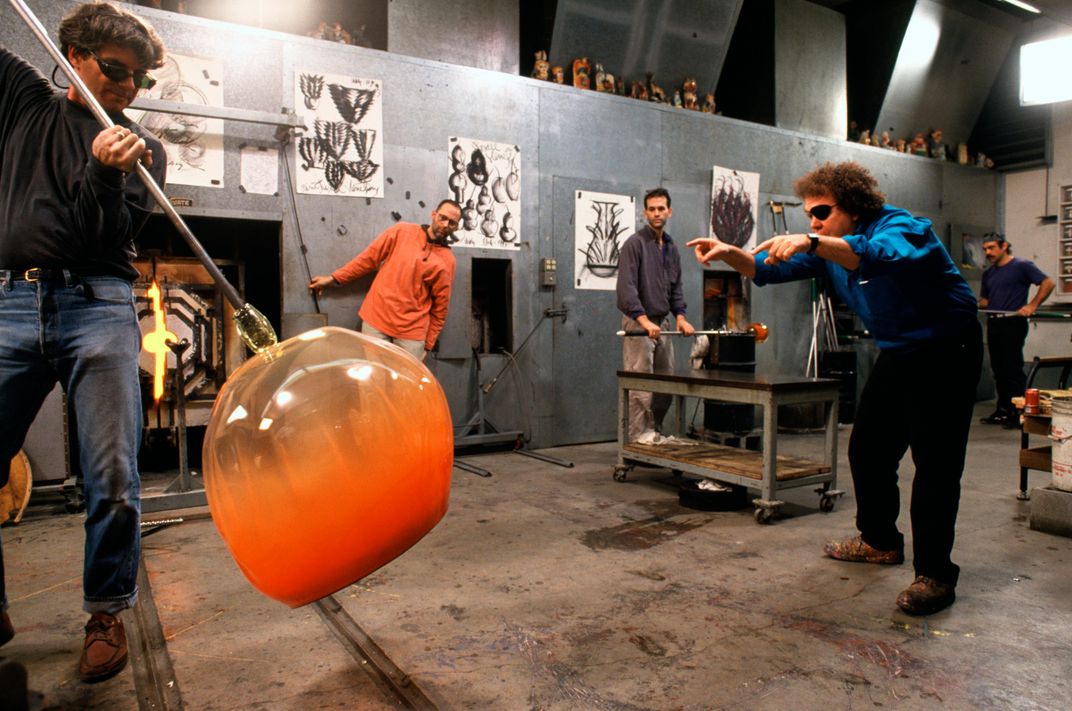Sculptor’s New Show is a Riot of Color
Dale Chihuly sets out to “overwhelm with light and color” in ‘Persian Ceiling’
Delicate blown glass hangs suspended like an alluring collection of alien jellyfish casting shimmering patterns of color on the walls of sculptor Dale Chihuly's Persian Ceiling installation at the Royal Ontario Museum, in Toronto, Canada.
The ceiling first appeared this past weekend, and it will be on display through January 2, 2017 as part of CHIHULY, 11 site-specific installations of the artist's work including a few created especially for the museum's 17,000 square-foot exhibition.
"I want people to be overwhelmed with light and color in a way they've never experienced before," Chihuly says, according to a press release from the museum.
The Chihuly name is synonymous with a revolution in the art of glassblowing. For more than 50 years, the glass sculptor has pushed the fragile material to its limits to create intricate, large-scale pieces. His fascination with light and transparent materials has also led him to incorporate neon, argon, ice and plastic into his work.
The sculptor, who was born in 1941 in Tacoma, Washington, first learned how to blow glass while studying interior design at the University of Washington. He continued studying the art form at the University of Wisconsin, at the Rhode Island School of Design (RISD) and then during a Fulbright Fellowship in 1968 that took him to Venice, Italy, where he watched the traditional process of a team working together to blow glass.
The Italian artists' process would heavily influence Chihuly. After he dislocated his shoulder during a body surfing accident in 1979, Chihuly became unable to hold a glassblowing pipe. He now relies on a team of glassblowers to create the beautiful works bearing the Chihuly studio name, as the website for a permanent display of "Chihuly Garden and Glass," a large installation adjacent to the Space Needle at Seattle Center, notes.
In a 2011 article for MIT's The Tech, Kathryn Dere reports that Chihuly "classifies his role as 'more choreographer than dancer, more supervisor than participant, more director than actor.'" That team approach allows Chihuly and the studio to create the kind of massive, immersive installations now on view at the Royal Ontario Museum.
One of the first pieces viewers will encounter at the CHIHULY exhibition is "Lime Crystal Tower," a momentous pinnacle of crystals gracing the front entrance. The 118 spires of green aren't made of glass but of solid Polyvitro, a word the Chihuly uses for plastic. The material has many of the transparent, color-holding properties that glass does but the 14-foot-tall tower weighs much less than it would if it were crafted of glass. Still, it tips the scale at 3,000 pounds, the museum's press release details.
"As with glass, it is really light that makes the Polyvitro crystals come alive," Chihuly says.
Other installations to watch out for in CHIHULY include boats filled with glass sculptors and a garden of glass through which visitors can stroll.
